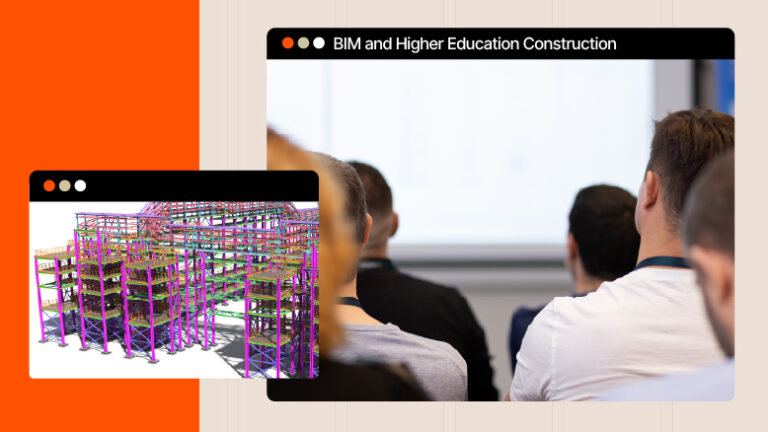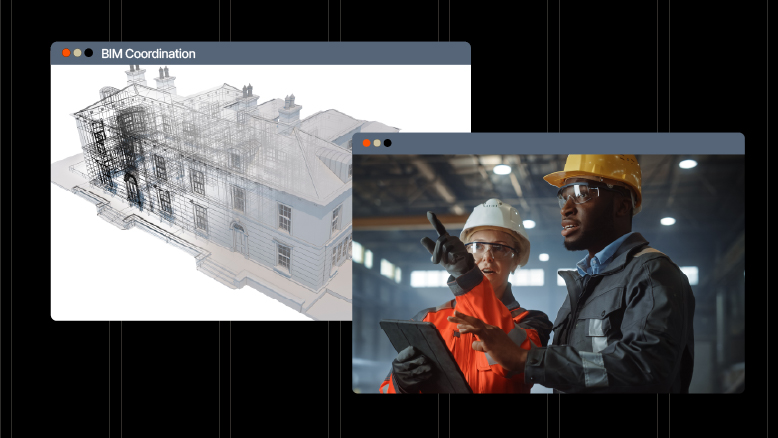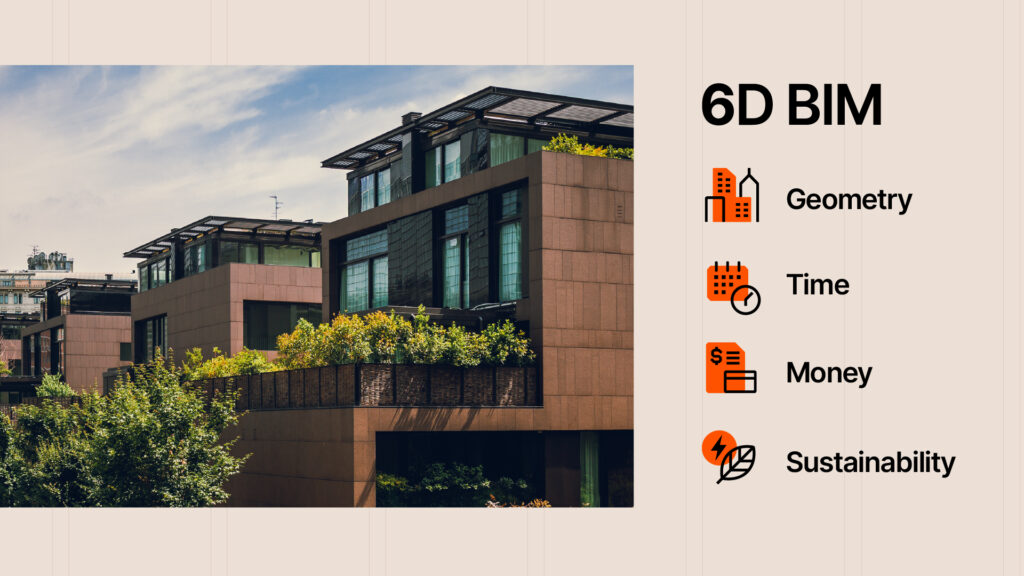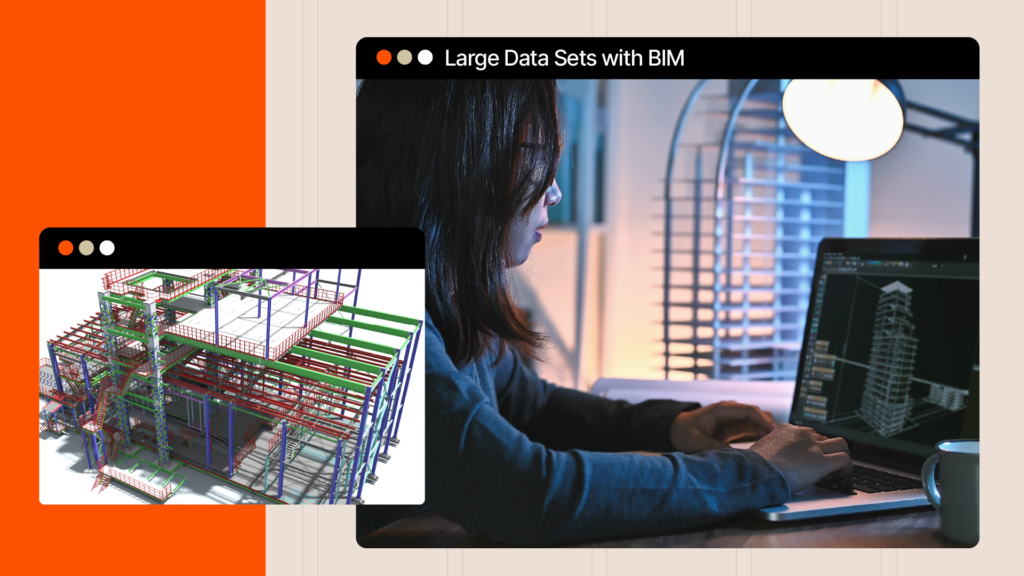— 7 min read
Using BIM in Higher Education Construction
Last Updated Apr 25, 2025
Last Updated Apr 25, 2025

As the construction industry changes, higher education institutions have started to implement building information modeling (BIM) at a rapid pace. If architecture, engineering and construction (AEC) companies want to work with colleges and universities, they need to increase their familiarity with BIM.
Table of contents
A Quick Recap: BIM’s Key Project Benefits
Building information modeling offers a range of benefits to construction projects, which have been explored in depth. To quickly hit the high notes there, some of the ways BIM can drive project wins include:
- Helping people visualize the project, which can improve buy-in, flag safety hazards and more
- Supporting more accurate scheduling and budget planning
- Automating constructability checks like clash detection
- Automating other processes like material takeoffs
- Aligning teams to a shared source of truth
- Improving sustainability analysis and reducing the project’s carbon footprint
- Supporting the building throughout its lifecycle with easier, more informed maintenance
During construction, for example, various foremen interacting with the model sets installs up for success. When they can see what needs to be installed and how it fits with its surroundings, they can ask questions and make sure they have what they need to get the job done.
BIM offers these perks for any project. When it comes to higher education, though, the value-add gets particularly clear.
Why BIM Makes Such a Difference for Higher Education Projects
There are already many excisting examples of BIM aiding in higher education construction. BIM has seen widespread adoption across the University of California system, for example (see UCSF and UCSD). The Massachusetts Institute of Technology (MIT) has a digital twin initiative that shares campus building data with its municipal government. Harvard University now lists BIM as part of its Capital Project Closeout Construction Documentation Requirements. The University of Alabama is actively deploying BIM for its new Performing Arts Academic Center.
BIM can help colleges and universities — and the AEC teams that step into their projects — drive success in a few specific ways:
Attracting New Students — and Being Ready for Their Arrival
The higher education campus is a huge piece of any institution’s marketing portfolio. A beautiful, well-designed, leading-edge campus is a lot more likely to attract new students than a worn-down, lackluster one. Since campus tours play such a significant role in wooing new students, institutions want to be sure they have something nice to show off.
Unfortunately, that desire is often counterposed with tight timelines. Universities and colleges usually need to turn projects around quickly to accommodate incoming students.
Plus, these institutions often plan their student load based on a building’s anticipated release date. That doesn’t leave much room for error. In fact, contractors often need to agree to liquidated damages on these projects.
In other words, for both the higher education institution and the contractors involved, completion is directly correlated to income. BIM steps in here to make it easier to quickly and accurately plan projects, check for constructability and align teams to do the work. It can help to minimize requests for information (RFIs) and change orders.
As a result, BIM helps higher education institutions plan for and build structures that attract new students. And it supports on-time project delivery so those structures are ready when those students show up.
Rising to Unique Facility Requirements
Working on higher education projects isn’t like building, say, condos — or even hospitals. On a single campus, workers might be erecting a residence hall near a theater, or a laboratory adjacent to a stadium. They might be tasked with building a locker room that includes a barbershop to cut players’ hair, or a mock-up nurse care unit, complete with all the complexities of any healthcare project.
There’s a learning curve with each unique type of building, and inexperienced contractors may not know about its specific requirements. On top of that, the higher education institution might have project-specific or client-specific expectations from their construction department.
Take a theater as an example. On a lot of projects, overhead space is fair game. But above a stage, a wide range of components need to be strategically placed, from lights to rigging to the curtain. Contractors might not know that a pipe can’t be placed there — unless they model the project.
By inviting stakeholders to review and comment on the model, contractors can avoid rework and position the building to perform at a high level upon release.
Finessing the Funding
Colleges and universities often deploy a mix of funding sources for their capital improvement projects. There might be state or federal funding in play, along with donor funds, grants and more.
Getting that funding in place is a huge hurdle on its own — so it's key to make sure that the project design aligns with the funding.
BIM offers a major measure of help here. By allowing everyone to visualize the project, it can help get donor buy-in. It lets stakeholders explore different options, taking a programmatic approach. They could see, for example, how positioning different rooms and facilities in a residence hall adjusts the number of students the hall can house.
With BIM, the decision-makers contributing funding get a way to see how their money will be used. Aligning those stakeholders from the outset minimizes the changes that happen during the project, which drive up time and cost. It’s no surprise, then, that an increasing number of higher education institutions use BIM.
Generating Repeat Work for AEC Companies
As more people pursue higher education degrees, universities and colleges will continue to expand their campuses to accommodate them. That means that getting higher education projects — and performing well on them — can set contracting firms up for a steady stream of repeat work.
On the other hand, making a major mistake on job can take that firm out of the running for any future projects — and, in short, BIM helps teams avoid those mistakes.
Supporting Long-Term Success With BIM in Higher Education
BIM isn’t just useful for new builds at higher education institutions. It can also help that college or university after closeout in a number of ways. By using BIM, contracting firms help that institution see benefits in the following areas.
Facilities Maintenance
Between the complexity of funding new projects and the need to maximize their existing acreage, higher education institutions often have an onus to extend the lifespan of their buildings as long as possible. Maintenance, then, becomes paramount.
BIM can support faster, stronger maintenance processes. When the model gets handed over to the facilities team at closeout, it shows them precisely how to access serviceable systems. This can help teams plan more strategic maintenance, a significant value-add for campuses that may have hundreds of buildings, each with its own unique needs.
Remodels and Retrofits
To stretch their funding and ideally shorten turnaround time, universities and colleges often choose to remodel or retrofit structures rather than demolishing and starting fresh. Pairing reality capture technology like laser scanning with the BIM model helps to drive success here.
Capturing the existing conditions accurately gives teams a clear foundation from which to work. By modeling the project in 3D, they can check for precise fit and function with any elements that will stay in place. That can help minimize surprises and shorten project completion timelines.
Build a Strong Foundation with our Preconstruction Course
With 20+ years of experience, Ben Ashburn teaches you how to streamline planning, bidding, and procurement for better outcomes.

Educating Future AEC Professionals
When campuses take over the model at closeout, it can become a live learning environment for its students. Professors in AEC programs can leverage the model as a teaching tool, helping students grasp how this technology works by relating BIM to a structure they can see and feel. And as BIM use becomes increasingly prevalent across the industry, giving students this competency as part of their degree sets them up for a successful career.
Using BIM on higher education projects can drive wins for everyone, from donors, to contractors, to facility managers and even students. Deploying this technology helps colleges and universities, AEC professionals and students stay in lockstep with increasing BIM adoption across the globe.
Was this article helpful?
Thank you for your submission.
0%
0%
You voted that this article was . Was this a mistake? If so, change your vote here.
Scroll less, learn more about construction.
Subscribe to The Blueprint, Procore’s construction newsletter, to get content from industry experts delivered straight to your inbox.
By clicking this button, you agree to our Privacy Notice and Terms of Service.
Categories:
Tags:
Written by
Paul Hedgepath
With over 25 years in the AEC industry, Paul Hedgepath has managed trade coordination and team training on more than 100 projects, including airports, stadiums, data centers, hotels, schools, and over 60 healthcare projects. His expertise spans 3D workflows, Procore implementation, AI project deployment, drone technology, 360-degree photography, laser scanning, and other advanced tools to boost accuracy and efficiency. Since 1998, Paul has focused on streamlining processes and solving challenges to add significant value to each project.
View profileKacie Goff
56 articles
Kacie Goff is a construction writer who grew up in a construction family — her dad owned a concrete company. Over the last decade, she’s blended that experience with her writing expertise to create content for the Construction Progress Coalition, Newsweek, CNET, and others. She founded and runs her own agency, Jot Content, from her home in Ventura, California.
View profileExplore more helpful resources

Streamlining Construction Projects with Effective BIM Coordination
The old saying goes: if you fail to plan, you plan to fail. Construction professionals know this better than nearly anyone. To take a project from a vision in an owner’s...

The Role of BIM in Sustainable Construction
Building information modeling (BIM) is transforming the architecture, engineering, and construction (AEC) industry. With this kind of sophisticated modeling, the industry has shifted from designing in 2D to 3D. This helps...

Building and Using Large Data Sets with BIM
In recent years, two technological concepts have exploded, almost in parallel: One, called building information modeling (BIM), makes it possible for stakeholders to “build” construction projects in a 3D virtual...

Exploring BIM’s Potential in Manufacturing Construction
As building information modeling (BIM) improves, project owners can build more sophisticated facilities faster. And as consumers increasingly demand what they want delivered to them faster, brands need smarter manufacturing...